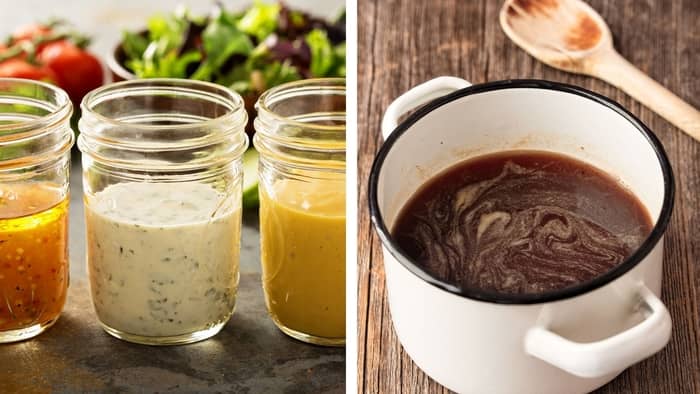Last Updated on September 3, 2021
Today, we’re going to be looking at what foods contain maltodextrin, and whether it’s suitable to eat when following a gluten-free lifestyle. You’ve probably seen maltodextrin as an ingredient on products more times than you can count – but can we eat it, and is it gluten-free? Let’s take a closer look at what it is first!
What Is Maltodextrin?
To look at, maltodextrin is a white powdery substance. It’s an additive you’ll often see in highly processed foods. It’s made from plants and is usually used as a thickener in foods. Rice, potato starch, corn, wheat – you can make it from a range of different foods. It’s pretty tasteless but can help preserve shelf life, thicken food and even fill products out to give them a higher volume! Although it’s in many foods – it’s only in tiny amounts.
You’ll see maltodextrin in everyday foods and even some drinks. It’s been known to bring out the flavor and sweetness in foods and drinks, so that’s probably why it’s in so many! You can even find it in baby formula, and even more surprisingly, beauty products.
Is Maltodextrin Gluten-Free?
As you’ve probably noticed, maltodextrin is in a range of products and the name is very off-putting. As a gluten-free individual, you’ll see the word “malt” and see that it sometimes contains “wheat”, and assume it’s a no-go. However, this couldn’t be further from the truth!
There is no malt in maltodextrin. Perhaps even more confusingly, although it can be derived from wheat, after processing – the gluten has been removed and it’s completely safe for consumption. Therefore, maltodextrin does not contain any gluten; barley malt, or otherwise.
If the maltodextrin does contain any gluten after processing, the label will clearly state that. However, more often than not, maltodextrin is made from corn – which is naturally, completely gluten-free.
It is worth noting that an allergy/intolerance to maltodextrin is extremely common if you’re a gluten-free individual. So if you’re still experiencing symptoms such as bloating, cramping, flatulence and Diarrhoea after removing gluten from your diet – you may be sensitive to maltodextrin.
Eating a lot of highly processed foods is often a trigger too. If your diagnosis is new, it may be worth removing it from your diet. This will give your gut time to heal.
Maltodextrin is named one of the confusing foods when following a gluten-free diet, you can see National Celiac Associations’ extensive list here.
Maltodextrin In Foods
Like many thickeners, it may surprise you how many everyday foods contain maltodextrin. Let’s take a look!
You’ll find maltodextrin in products such as:
- Baked goods
- Salad dressings
- Soups
- Gravies
- Cereals
- Rice
- Pasta
- Frozen meals
- Candy
- Energy drinks
- Protein powders

Read more about: Is BBQ Sauce Gluten-Free? Get BBQ Ready!
This list may seem exhaustive, but it certainly isn’t. Maltodextrin can be found in almost anything!
For example, I went onto the website of a grocery store and entered gluten-free gravy into the search bar. The first result was Pioneer Gluten-Free Brown Gravy Mix – and guess what? One of the ingredients is maltodextrin!
Another example is upon entering salad dressings into the same grocery store, the first result was Wish-Bone Red Wine Vinaigrette Dressing, and again – one of the ingredients is maltodextrin. Interestingly, this brand says in brackets that the maltodextrin is derived from corn – which is very useful if you are celiac/gluten intolerant and have a separate wheat allergy.
Benefits and Dangers Of Maltodextrin
Like many foods, maltodextrin comes with it’s benefits and dangers. Let’s take a closer look at what these can include – especially as it’s in so many of our everyday foods.
Benefits
Using maltodextrin is products comes with a whole host of benefits, such as:
- Easy to produce
- Source of fast calories and energy
- Quickly increases blood sugar levels (helpful for people living with hypoglycemia)
- Improves shelf life of products
- Improves taste of products
- Texture of products is better
- Inexpensive compared to other substitutes
Dangers
Whilst it does offer a range of benefits, there are some downsides to maltodextrin. Especially if consumed in large amounts. These include:
- Diabetes – earlier, we looked at how maltodextrin rapidly increases blood sugar levels. Whilst this is helpful for some conditions, diabetes is not one of them. If you have diabetes or are insulin-resistant, this can be very dangerous
- It lacks nutritional value
- It’s bad for your metabolism
- Changes in Gut Bacteria – it causes an increase in your “bad” gut bacteria, which not only can lead to symptoms of discomfort but can eventually lead to digestive issues and auto-immune disorders
- High in Sugar – can lead to weight gain and cholesterol issues
- Highly processed – which is known to be a trigger in gluten-free individuals
- GM corn is more commonly used to make maltodextrin. This is good for gluten-free individuals. However, GM products are bad for your health and can cause allergies, and even organ damage! Many products are now non-GMO, so it may be useful to opt for those.
Although the dangers outweigh the benefits, unless you’re intolerant, there’s no need to completely remove maltodextrin from your diet. As long as it’s eaten in moderation, you should definitely allow yourself a treat every so often.
Conclusion
To conclude, maltodextrin is in a whole host of foods but is usually gluten-free and safe to consume. Ingredients are usually really extensive now and will label any warning signs for us. Even when derived from wheat, maltodextrin will contain less than 20ppm of gluten, which is what can legally be labelled as gluten-free.
I hope in the future that maltodextrin usage is reduced in everyday products, but only time will tell.
If you take a look in your pantry, or refrigerator – have a look at how many products contain maltodextrin. Feel free to leave in the comments below any products that surprise you. I guarantee they’ll be a few – there may even be some in your bathrooms and beauty cabinets too!

Hi, my name’s Zoë. I’m 28 years old and live in London, UK. I work full time as a freelance writer and critic for West End theatre. Writing has been a passion of mine for as long as I can remember. I spend most of my free time at the theatre, or at conventions. I’m married to the love of my life, and live in a small apartment with my fur baby, Lillie. I run two of my own blogs: No Safer Place and Stage to Page: both of which have won awards. I also have a YouTube channel where I talk about all things stagey.
